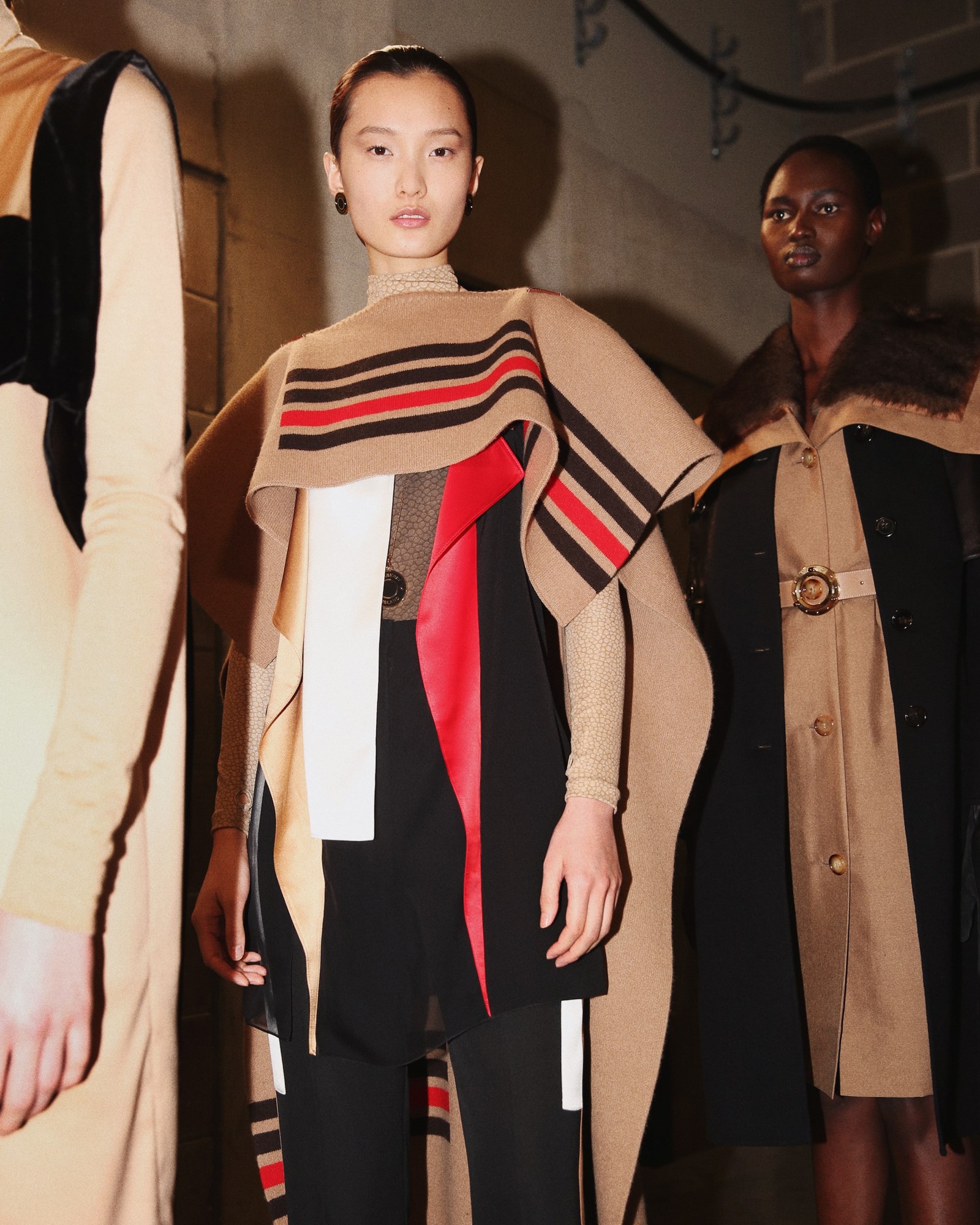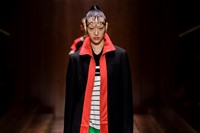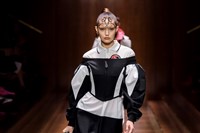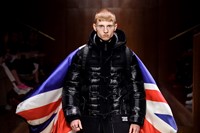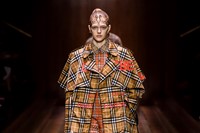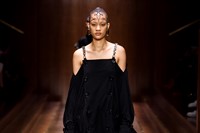For his second catwalk collection for Burberry, Riccardo Tisci told a tale of two cities – in London terms, East End boys, West End girls – although it wasn’t quite as clean-cut as that. Indeed, maybe it was a tale of two countries rather than cities – not to get all Brexit, but we’re kind of living in a divided Kingdom, despite the name. Tisci dubbed his collection Tempest, a play where Ariel quoth that “hell is empty and all the devils are here”.
Then again, that was all going on outside the walls of Tisci’s showspace. Nevertheless, that notion of dichotomy and juxtaposition extended to the show environment itself – one room veneered with wood and set with staggered seating, resembled a plush first-class lounge on a train; the other, egalitarian and in the ground, circled by scaffolding scaled by teenagers, could’ve been dubbed ‘working class’. Of course, you didn’t know which you were sat in until the end, and only then if you fully explored the cavernous space underneath the Tate Modern, a showcase of contemporary British culture, here showing more.
How’s that for symbolism? You could write a thesis on this stuff. In future, people very well may.
The idea wasn’t played out in a heavy-handed fashion, but it was both considered and gave occasion for further consideration. You can dissect and digest what Tisci is doing at Burberry endlessly, perhaps a reflection of his boundless fascination with British societal constructs. Indeed, for the Spring/Summer 2019 issue of AnOther Magazine, he relayed a veritable litany to Susannah Frankel: “You have punks, you have skinheads, you have the aristocracy, you have the Queen, who I love.” Tisci himself dissects that down to four ‘classes’ of clothes; the boy, the girl, the lady and the gentleman. It’s not about age, but rather outlook – the boy and the girl are sportswear-lead, the lady and gentleman sartorial. The unifying element among all of them was their conviction. Whether showing working class street duds or plissé silks, Tisci drew the observer into a fully realised world, shifting gears, evolving, ever-changing. The switches between the two recalled nothing less than the passing of foot traffic on London streets – an early memory of the city for Tisci where, the nascent young designer realised, “you could be anything – anyone – that you wanted”.
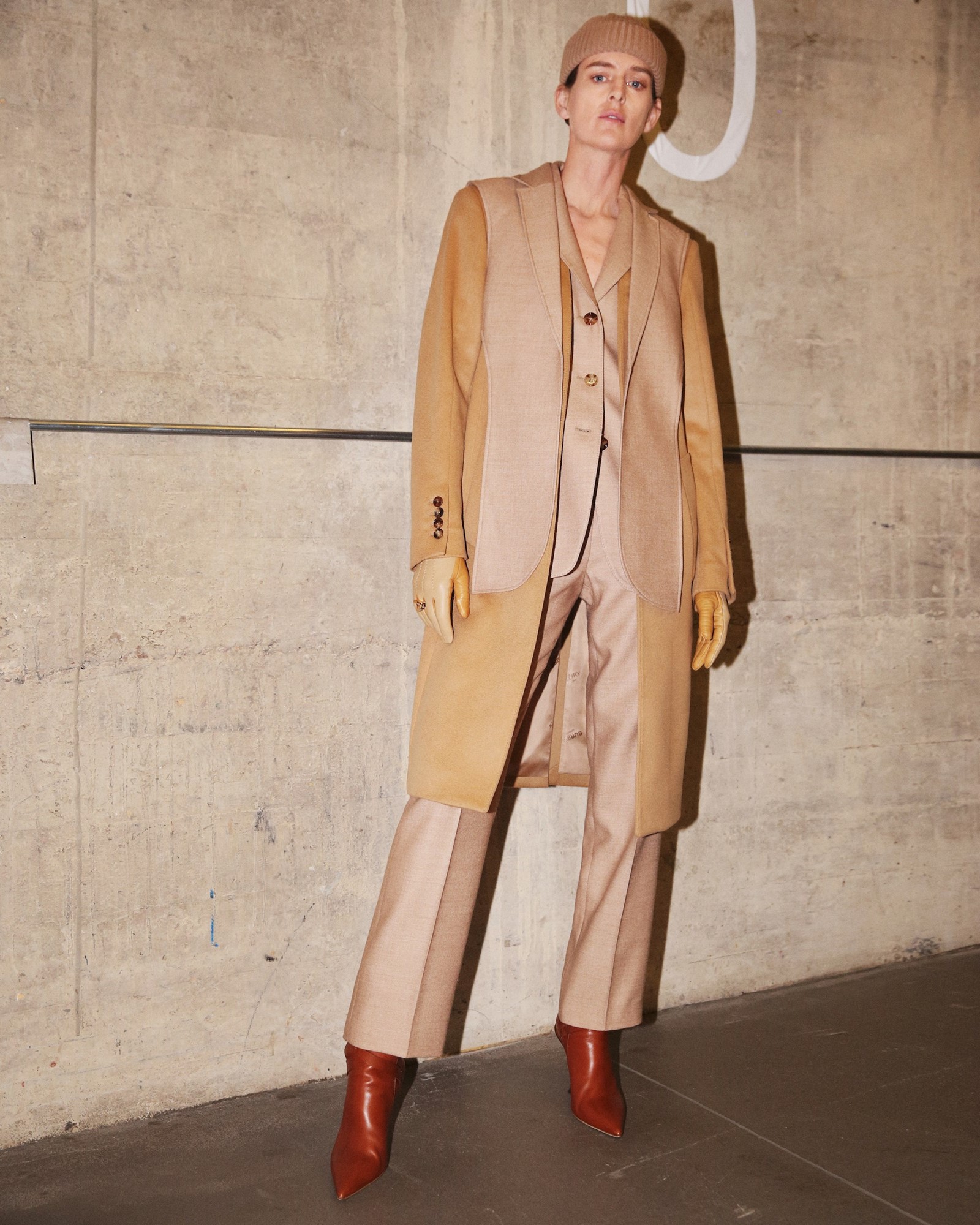
There is always a sense of transformation in Tisci’s clothes – the idea of wearing clothes to not only express a character, but to help create it. At Burberry, the combination of people on his catwalk underscores that idea of perpetual recreation. It’s echoed in the physicality of the clothes too – like the Burberry trench, which could be studded with rings and chains like punk facial piercings or blanketed with fluttering foulard silk (her Majesty, famously, favours Burberry’s). Tisci talked about Britain as a country of contrasts, “from the structured to the rebellious and free”. That could have been about class, but couldn’t it also have been about the tailored suit (after all, a British invention) or trench-coat (invented by Burberry) and the need to free those up through reinvention, rather than reiteration? That’s a tall order, but it’s one Tisci seems to be tackling with aplomb.
Even more than his debut, this Burberry show seemed to show Tisci as an auteur, establishing more than the lines of clothes for the season to come. Rather more, here he was crafting another kingdom, creating his own characters. Each of those subjects had distinct hair and make-up options, looks fully realised from head-to-toe, true individuals. How about another bit of Shakespeare? “O brave new world, that has such people in’t!” That’s exactly was Tisci is creating at Burberry.
